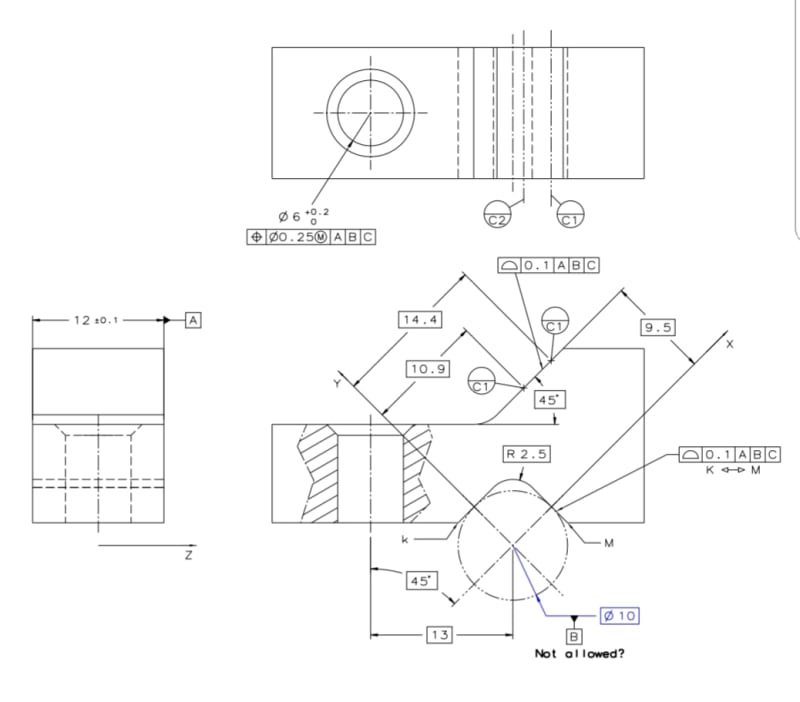Sem_D220
Mechanical
- Jul 9, 2018
- 290
What would be your reaction to a drawing showing a prismatic feature on a part, comparable to those that are found on V-blocks, a phantom line circle tangent to the 2 angled surfaces of the prism, the circle specified with a basic diameter, and a datum feature symbol associated with the phantom line cylinder?
The datum axis derived from the cylinder adjacent to the prism will be used as one of the datums to established a datum reference frame for the part.
The problem I see is that the datum "feature" to which the datum feature symbol needs to be attached and from which the datum axis needs to be derived is not a feature of the part at all, but an external auxiliary component.
Would you be concerned that the scheme is not supported by ASME Y14.5? If it is supported - where and how? If not, what is the closest supported alternative?
The datum axis derived from the cylinder adjacent to the prism will be used as one of the datums to established a datum reference frame for the part.
The problem I see is that the datum "feature" to which the datum feature symbol needs to be attached and from which the datum axis needs to be derived is not a feature of the part at all, but an external auxiliary component.
Would you be concerned that the scheme is not supported by ASME Y14.5? If it is supported - where and how? If not, what is the closest supported alternative?


![[hammer] [hammer] [hammer]](/data/assets/smilies/hammer.gif) .
.
![[ponder] [ponder] [ponder]](/data/assets/smilies/ponder.gif)
